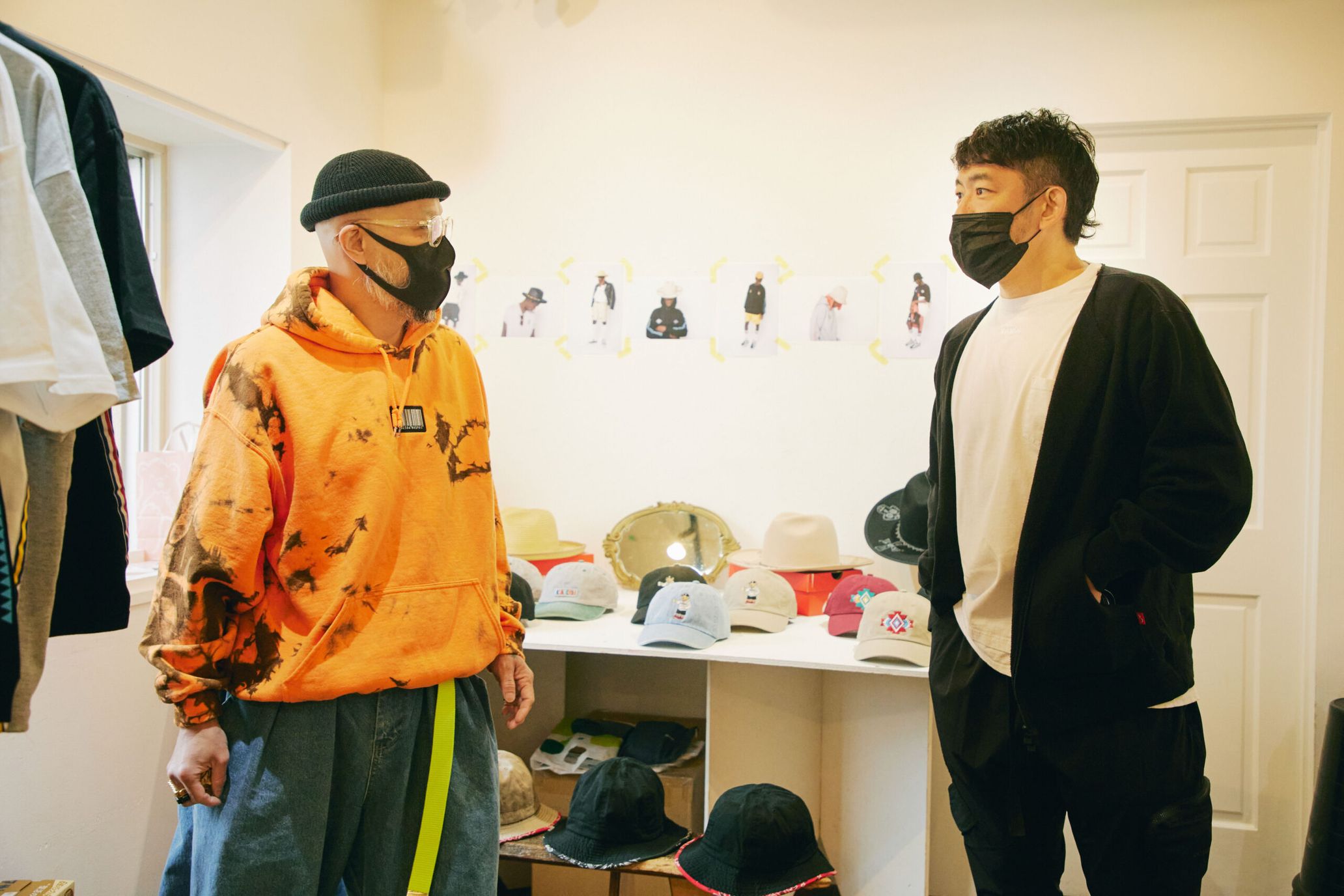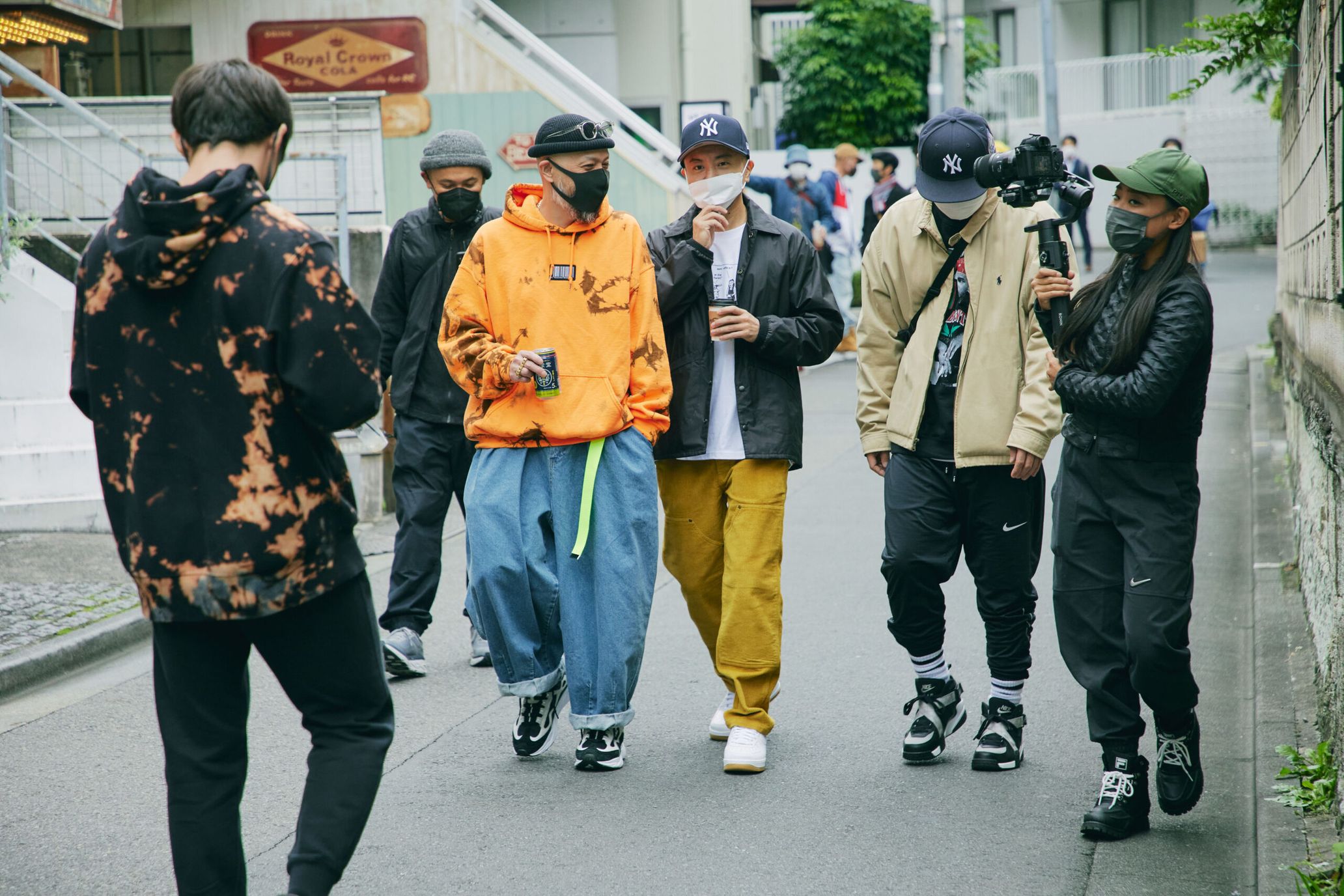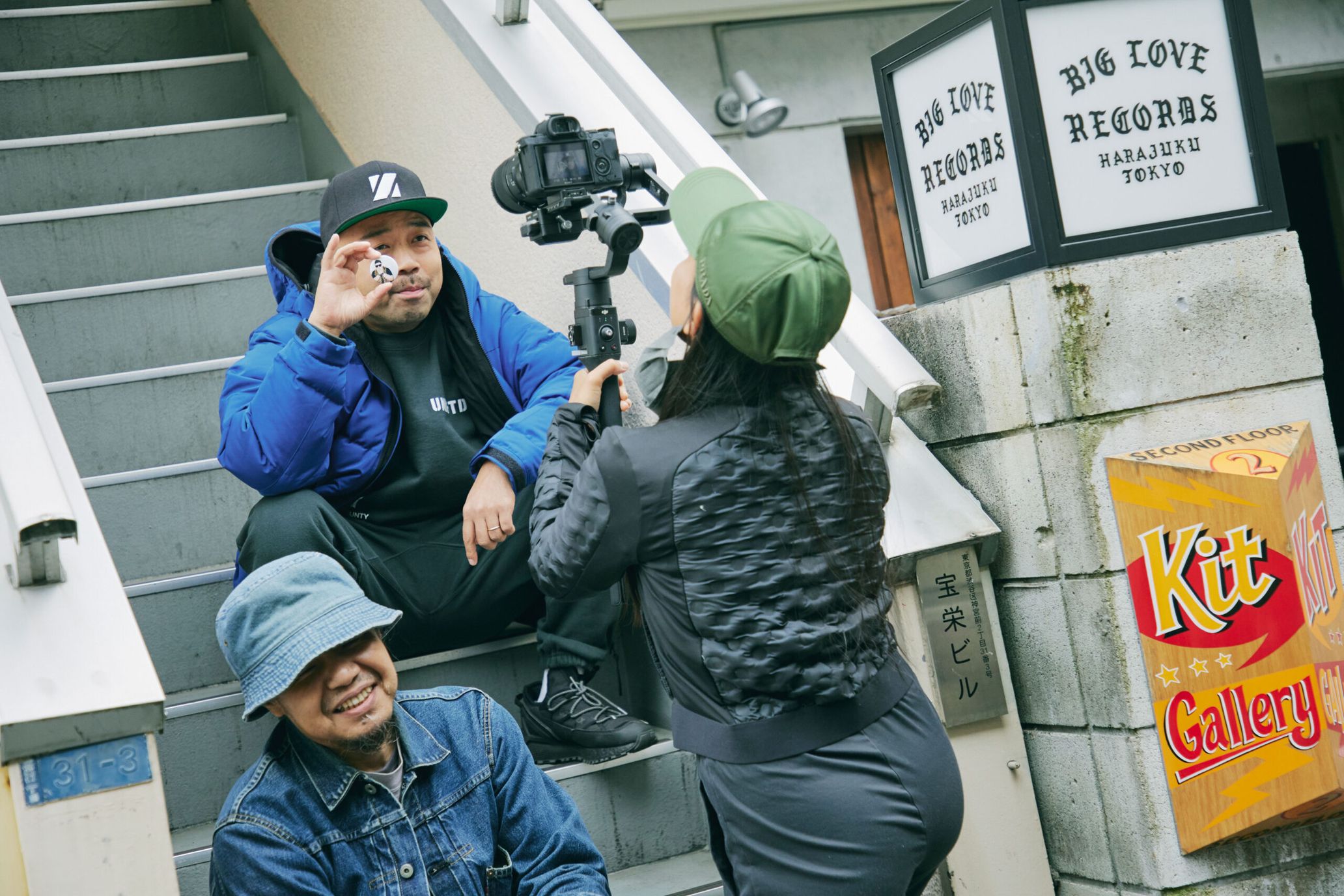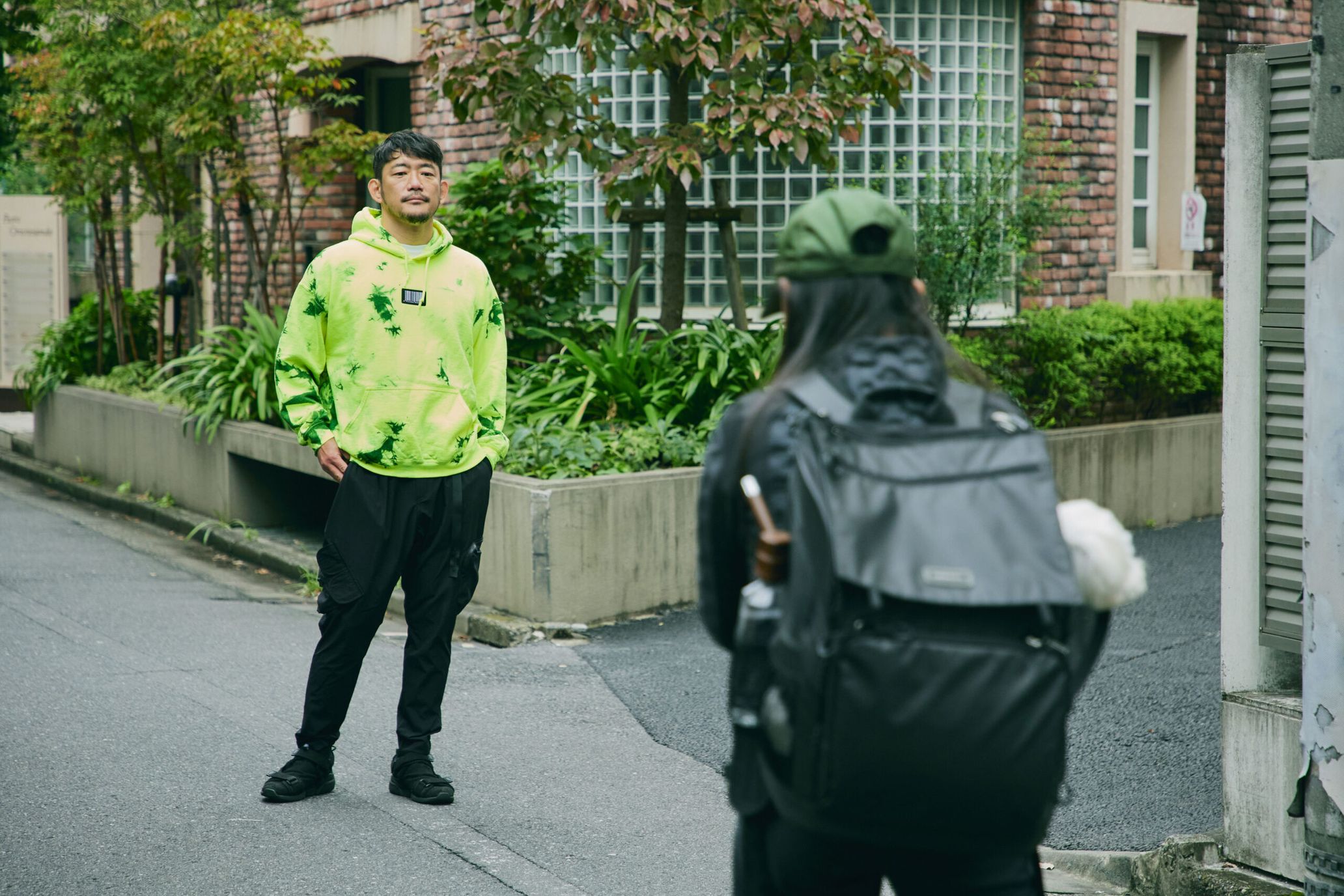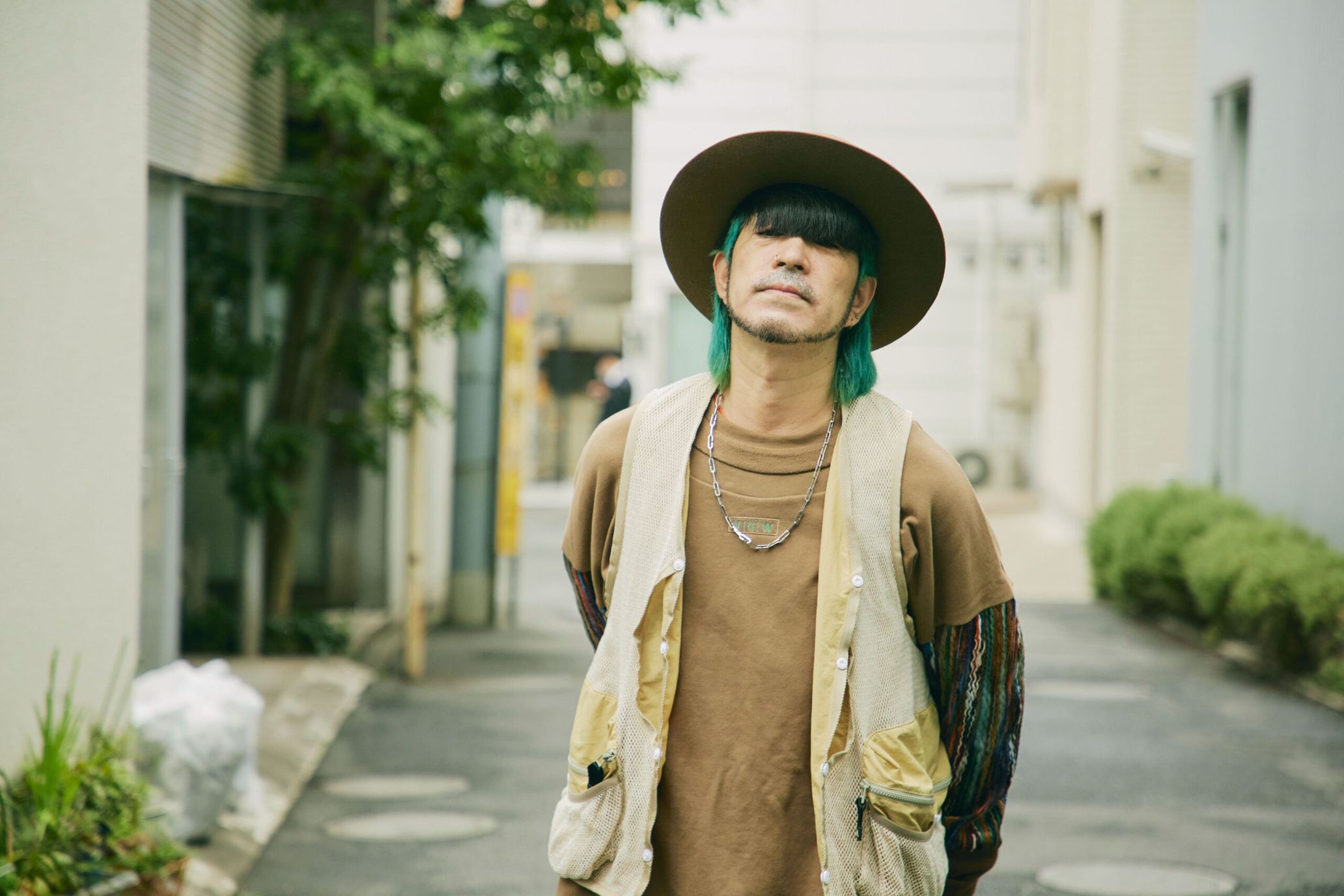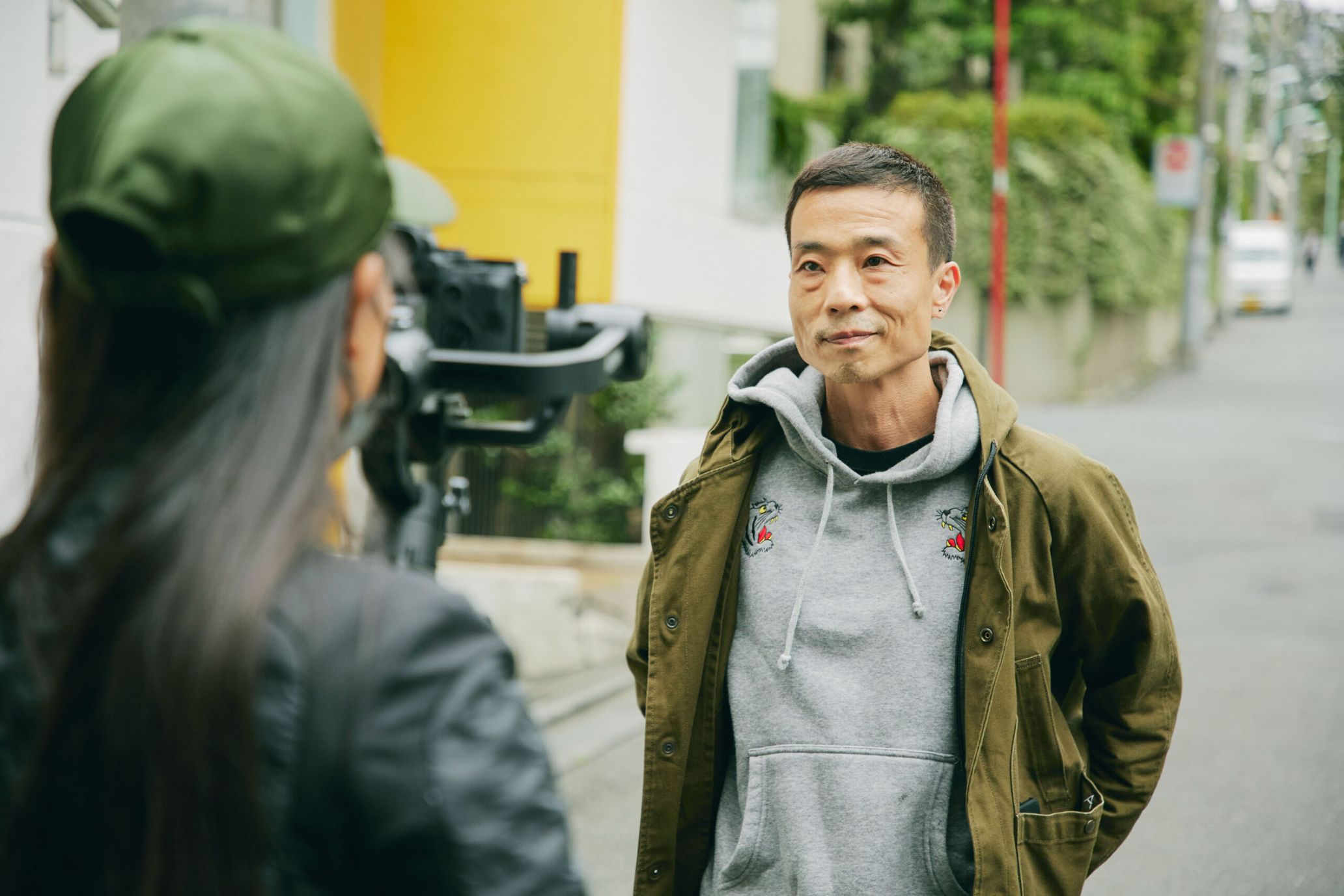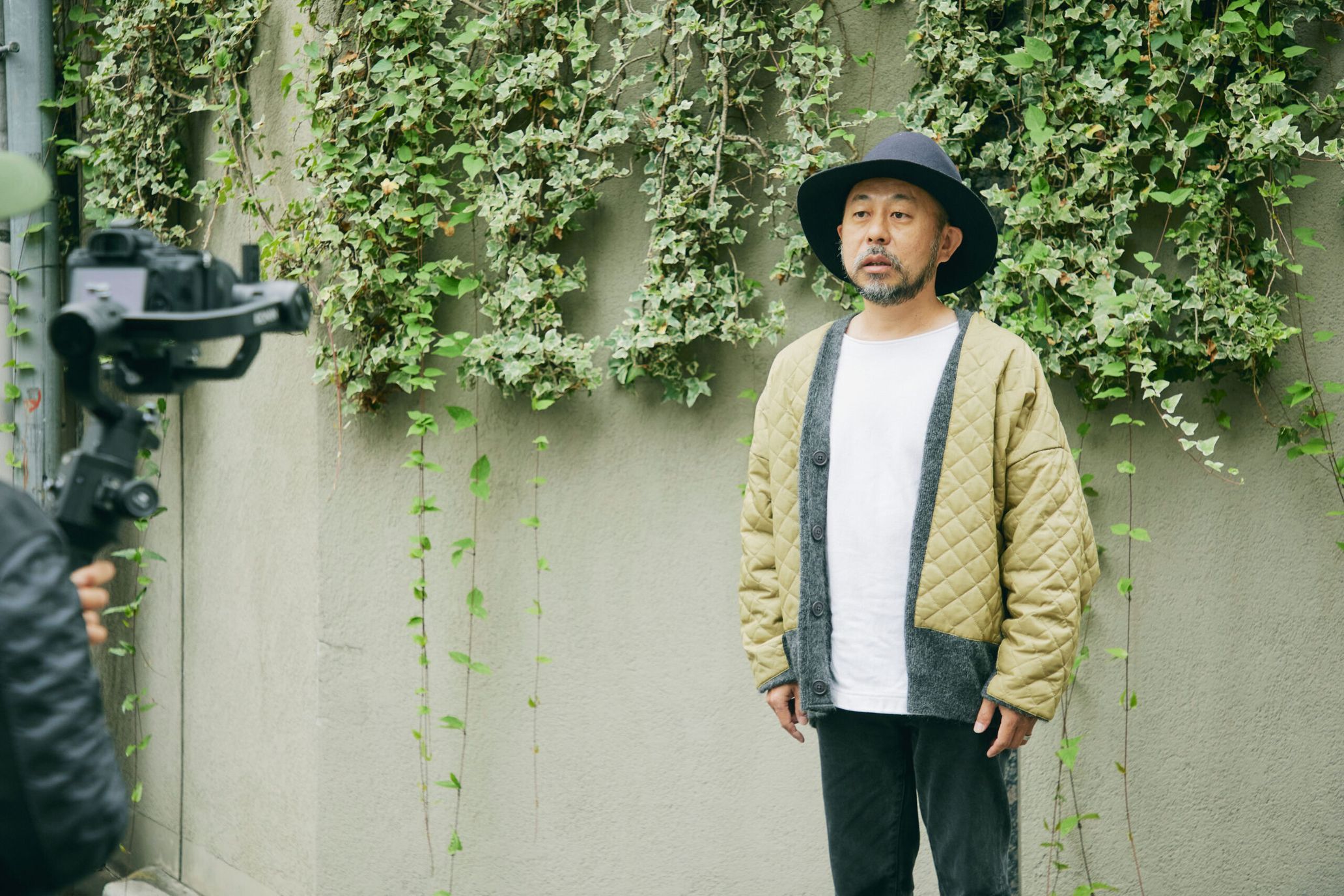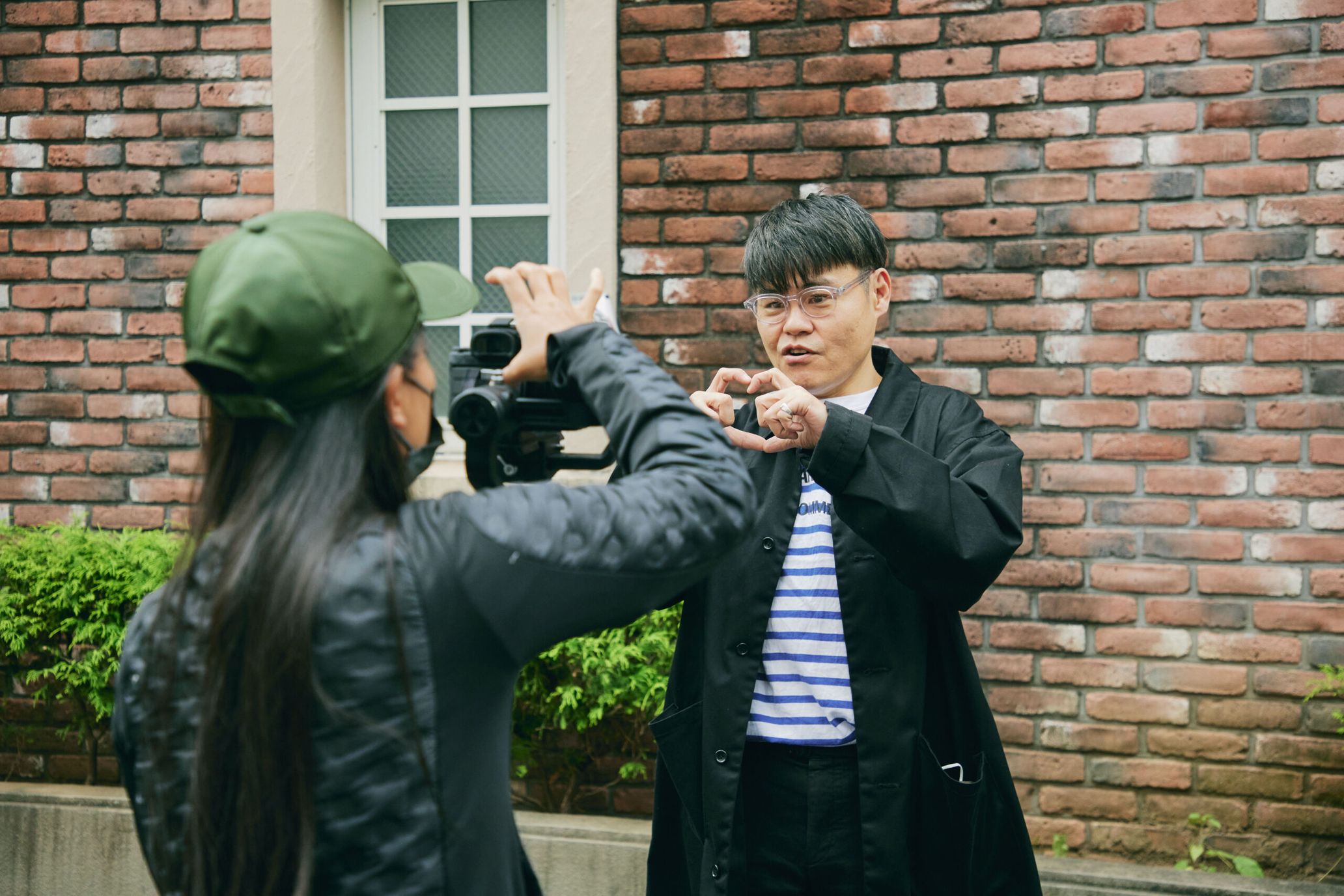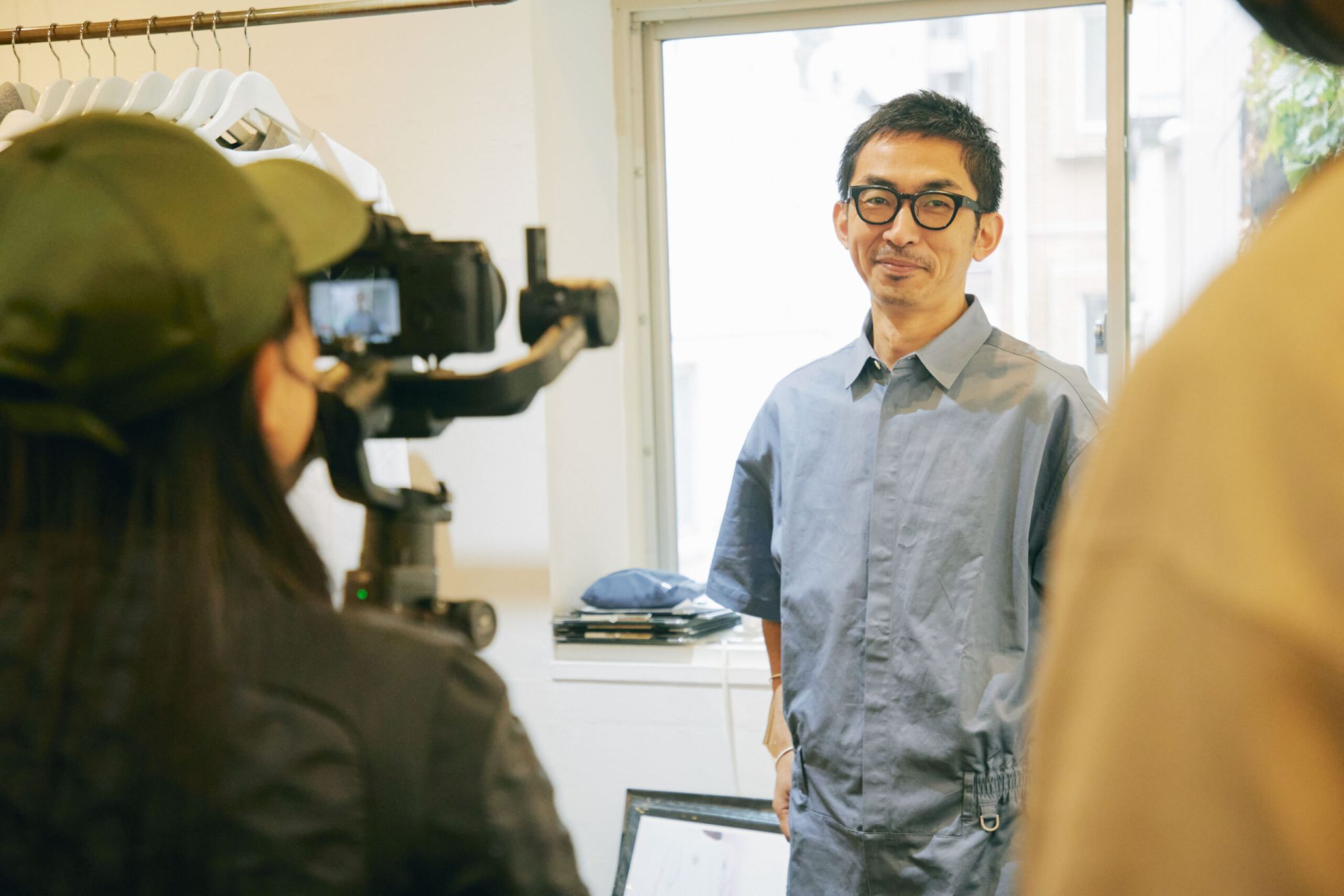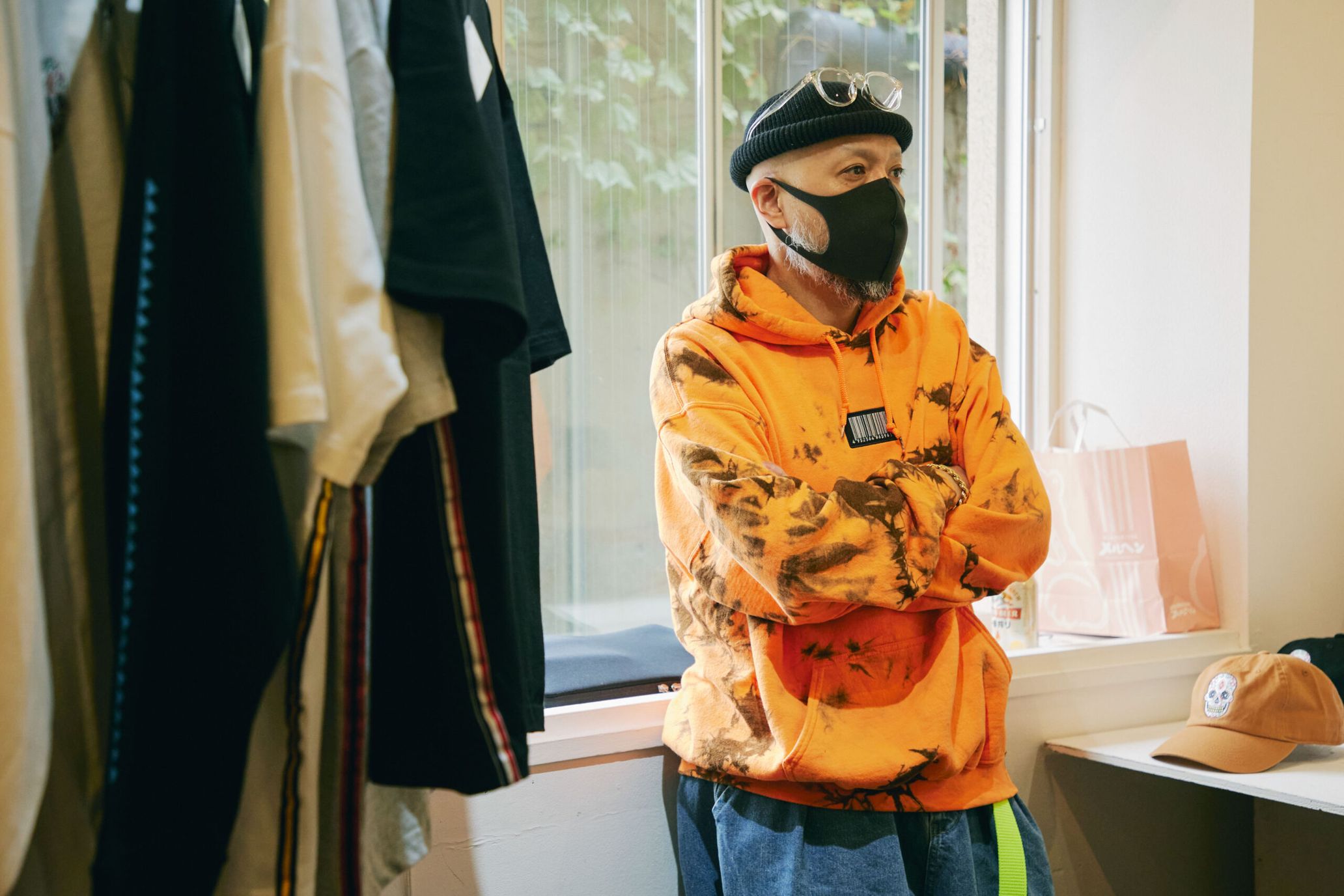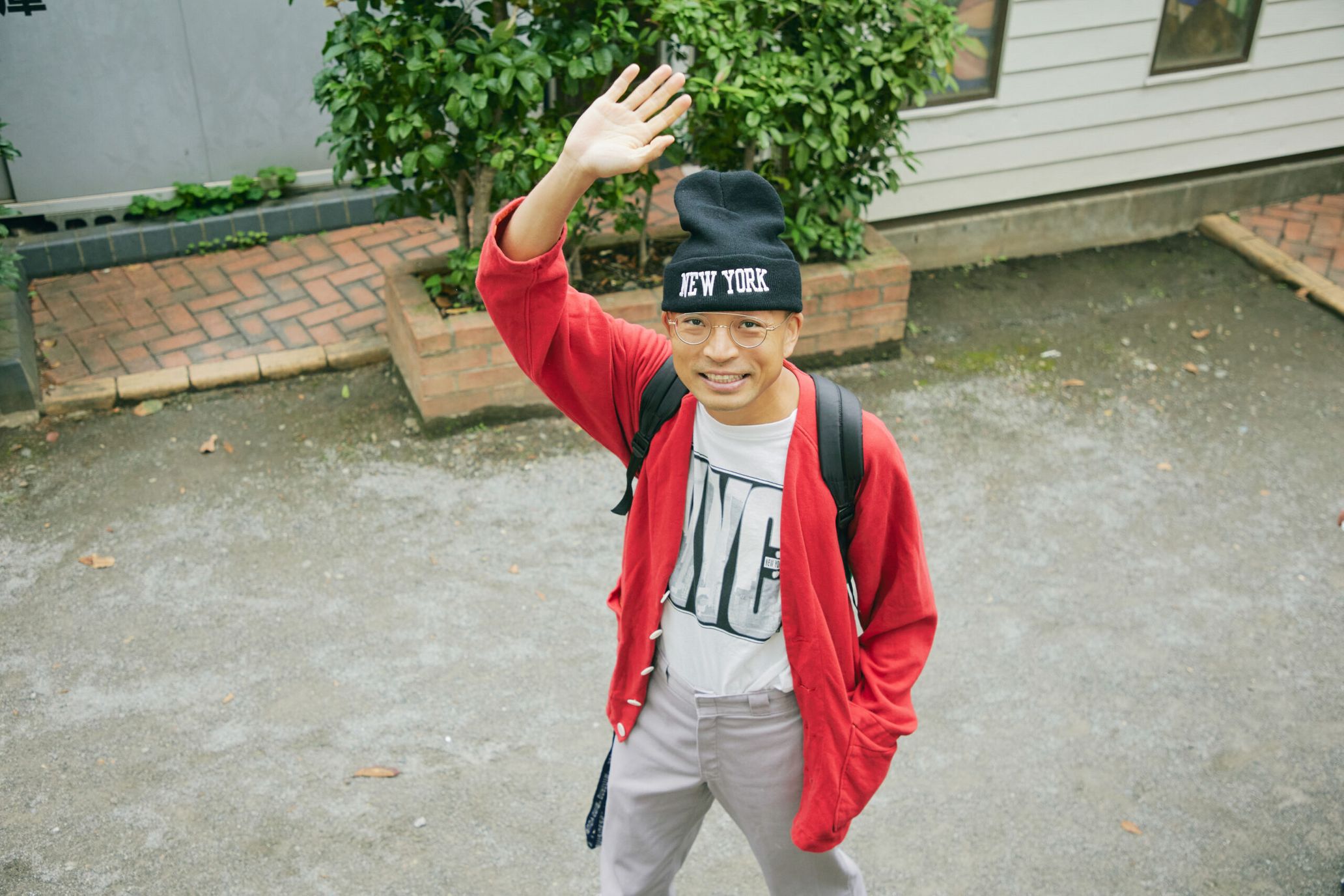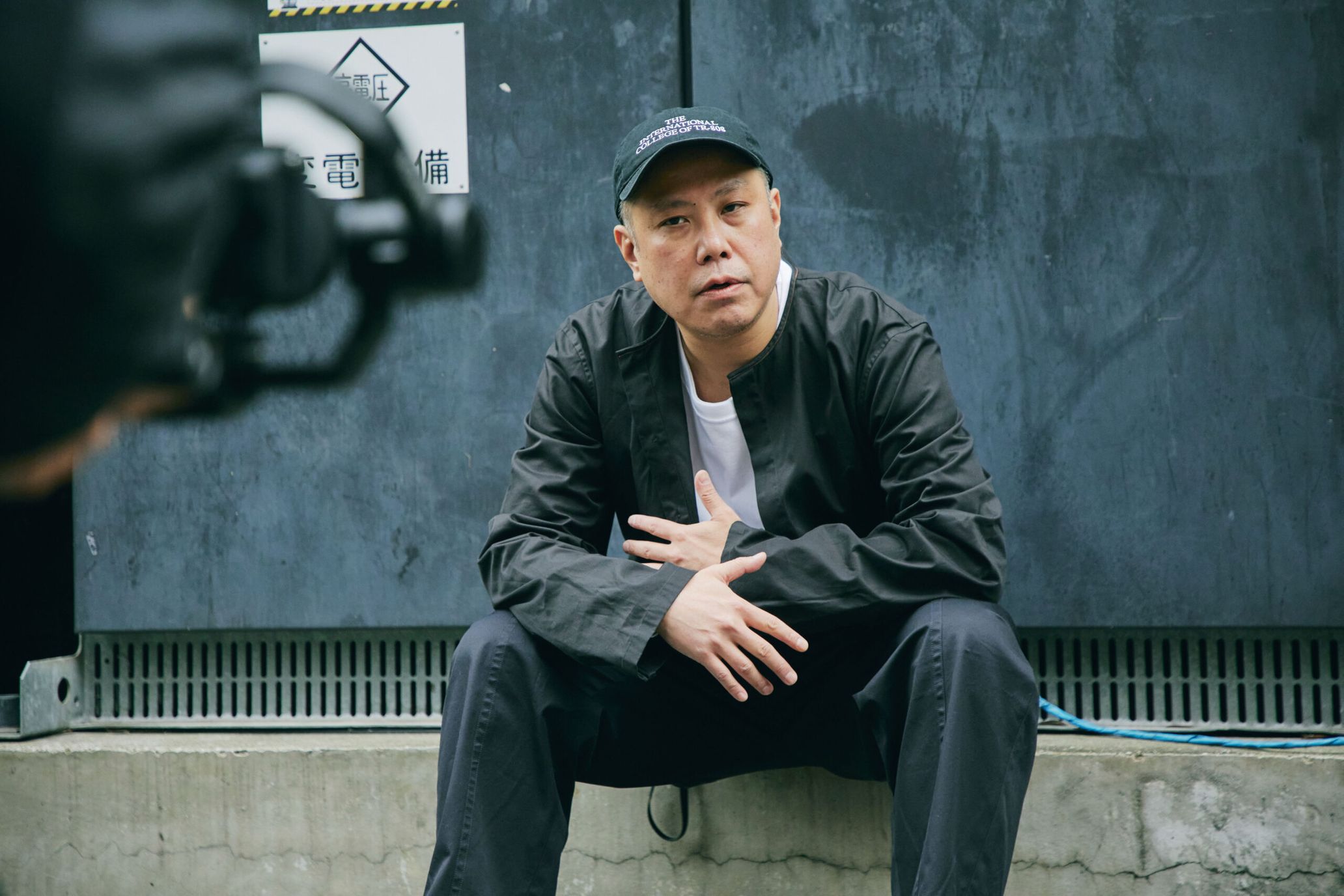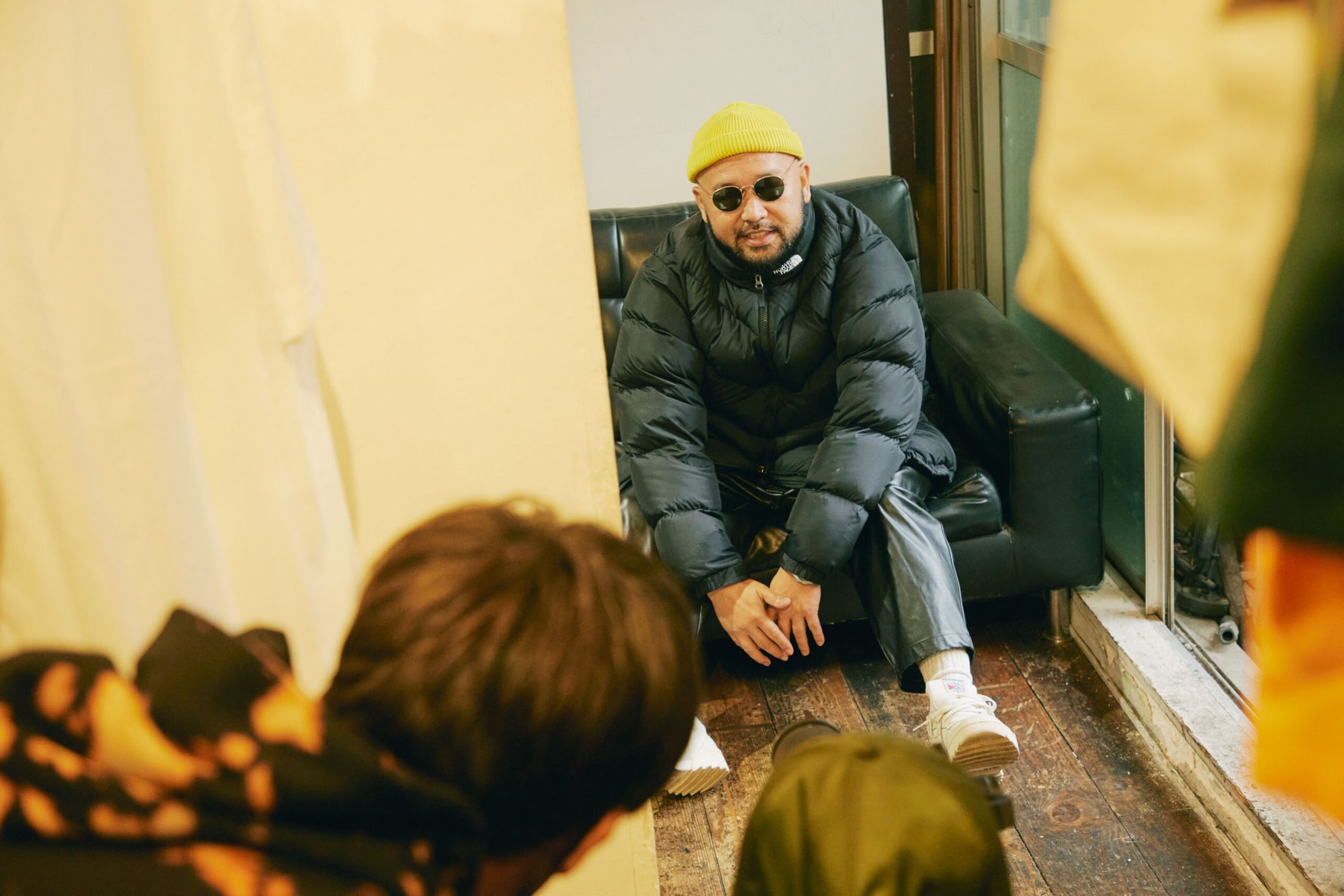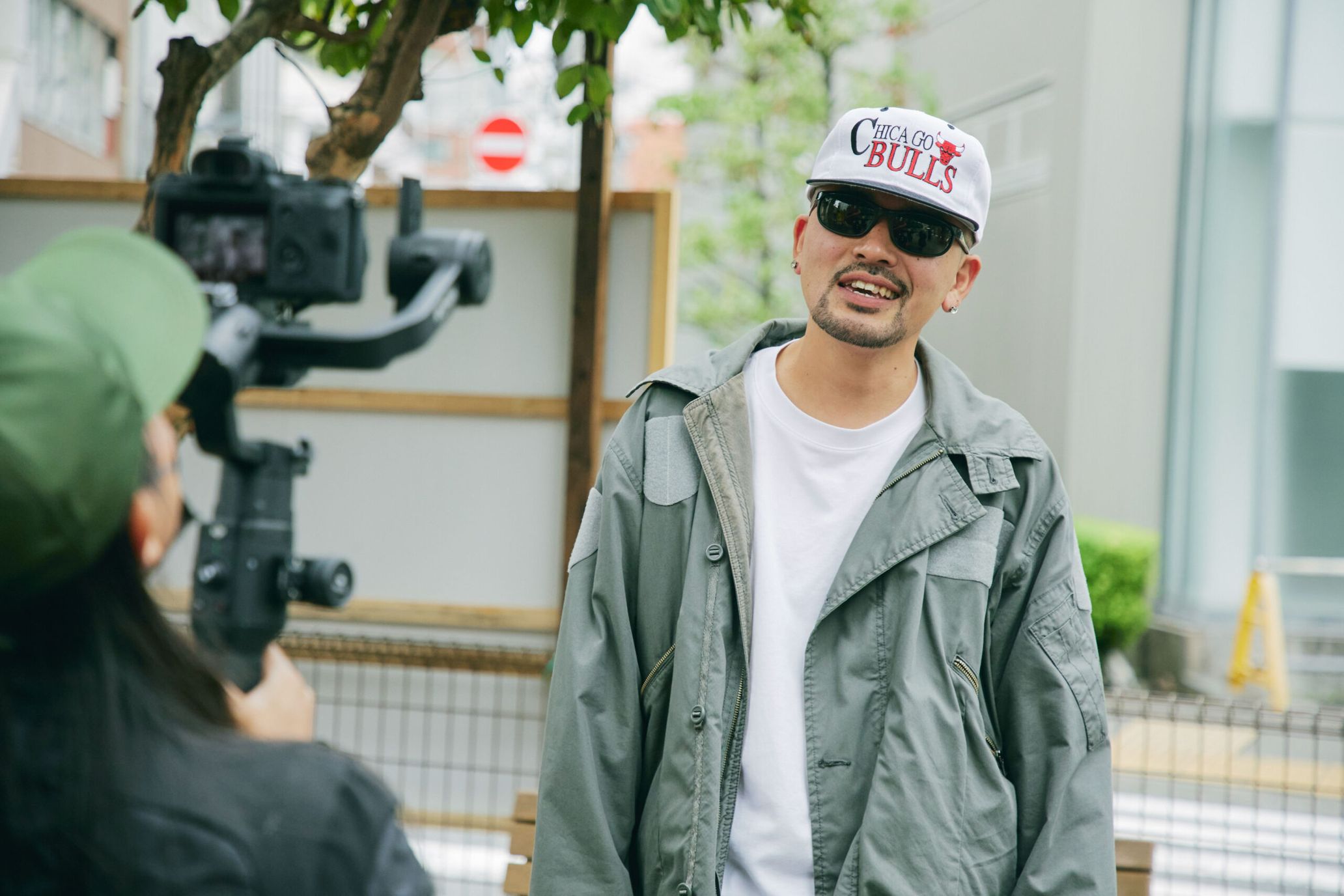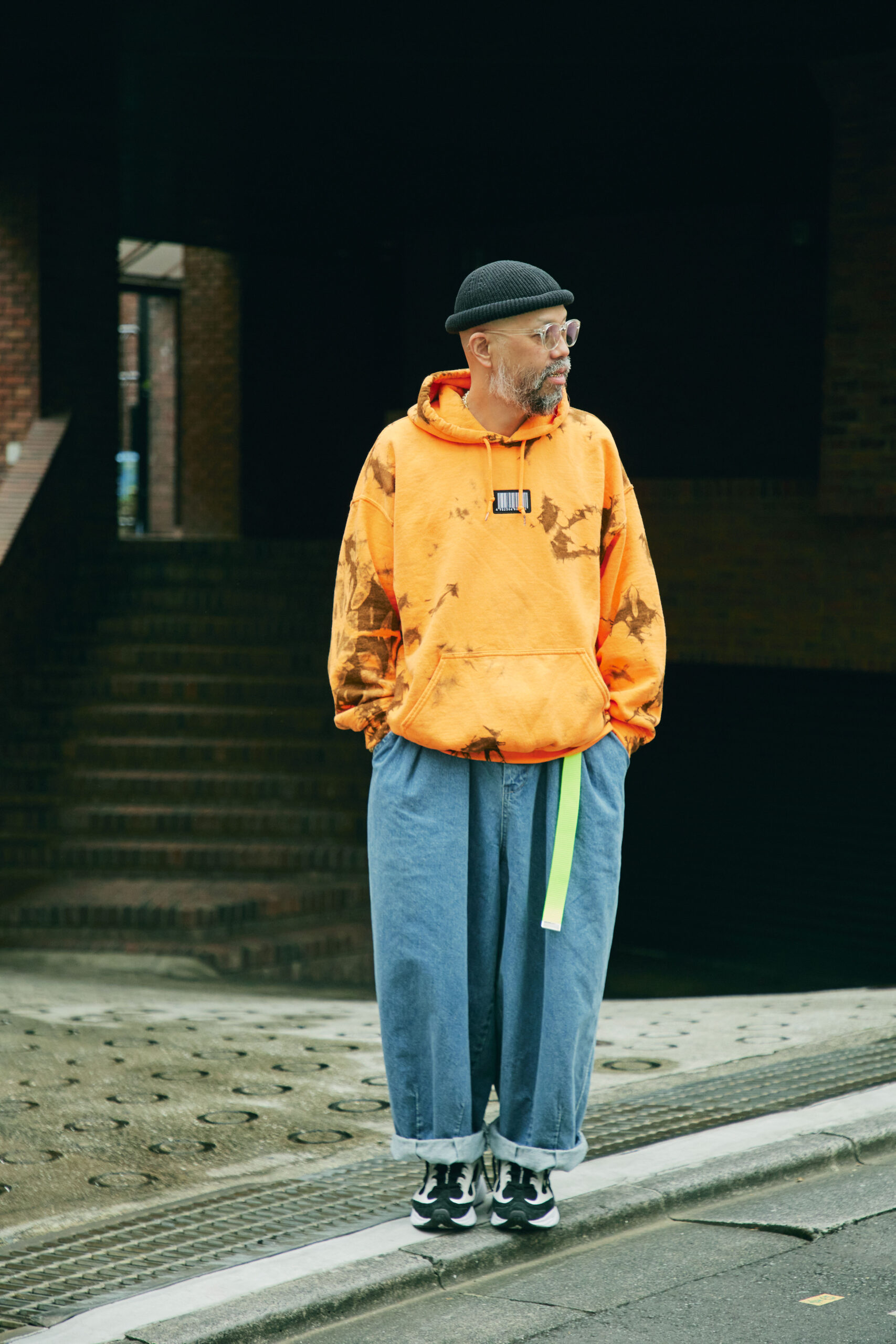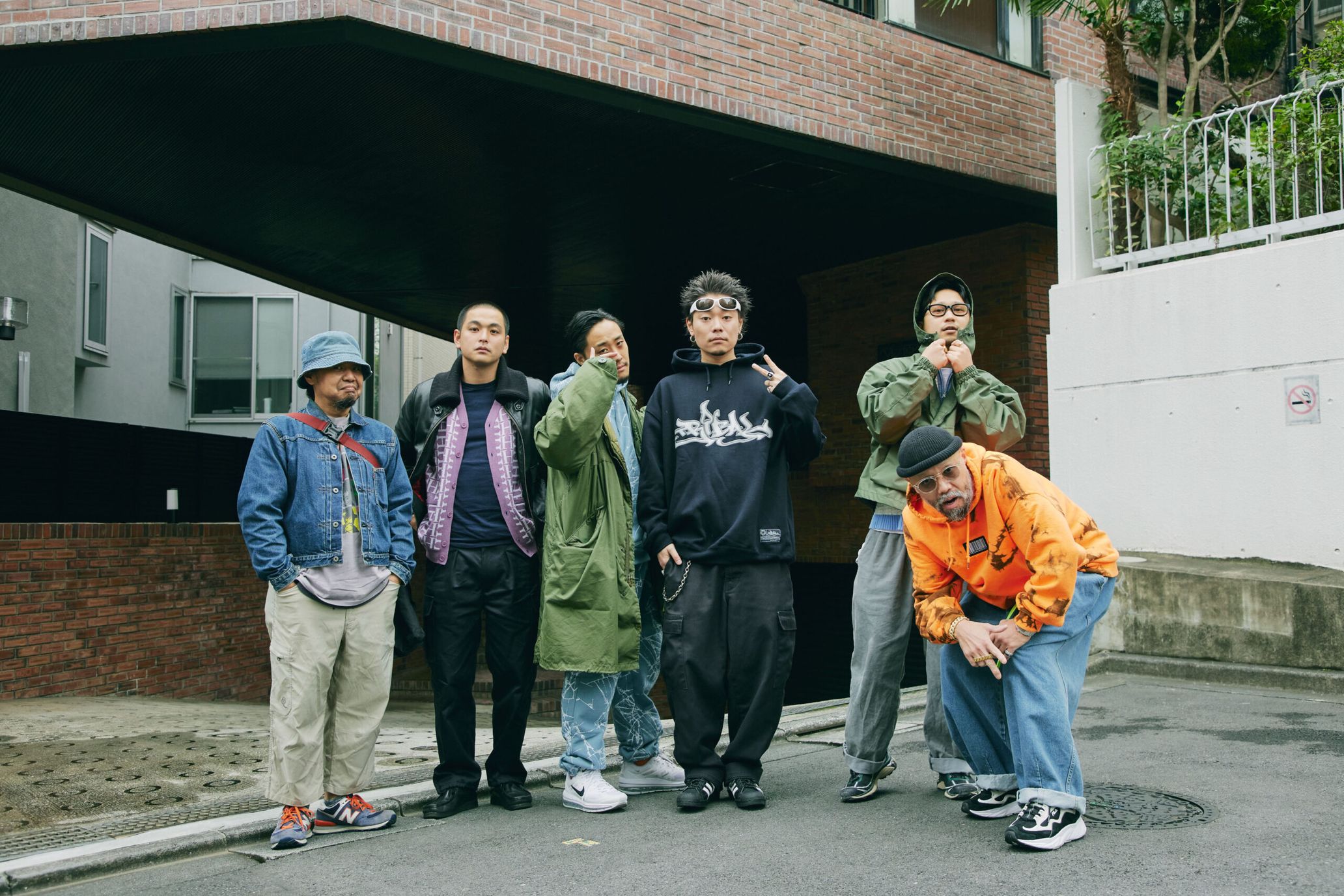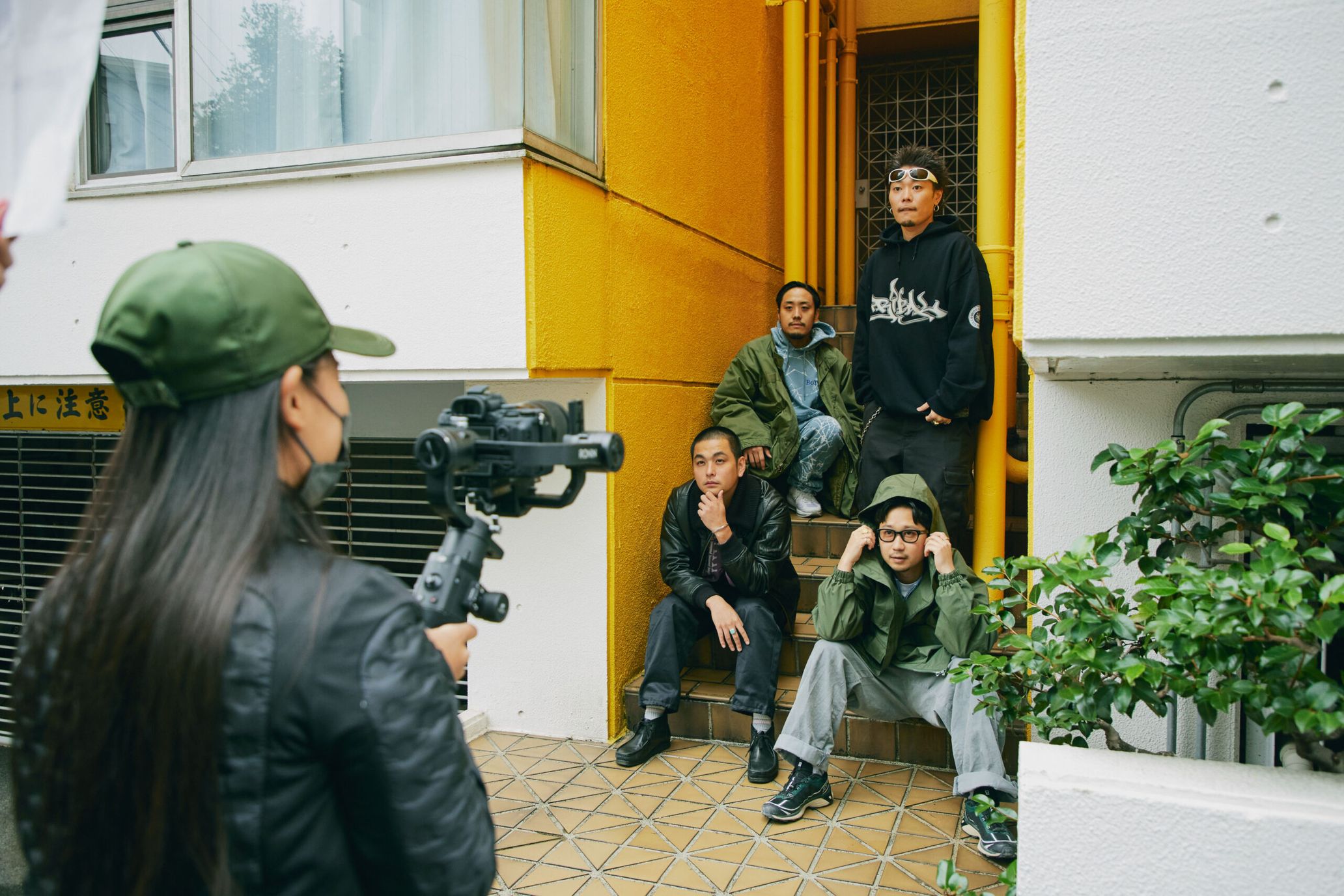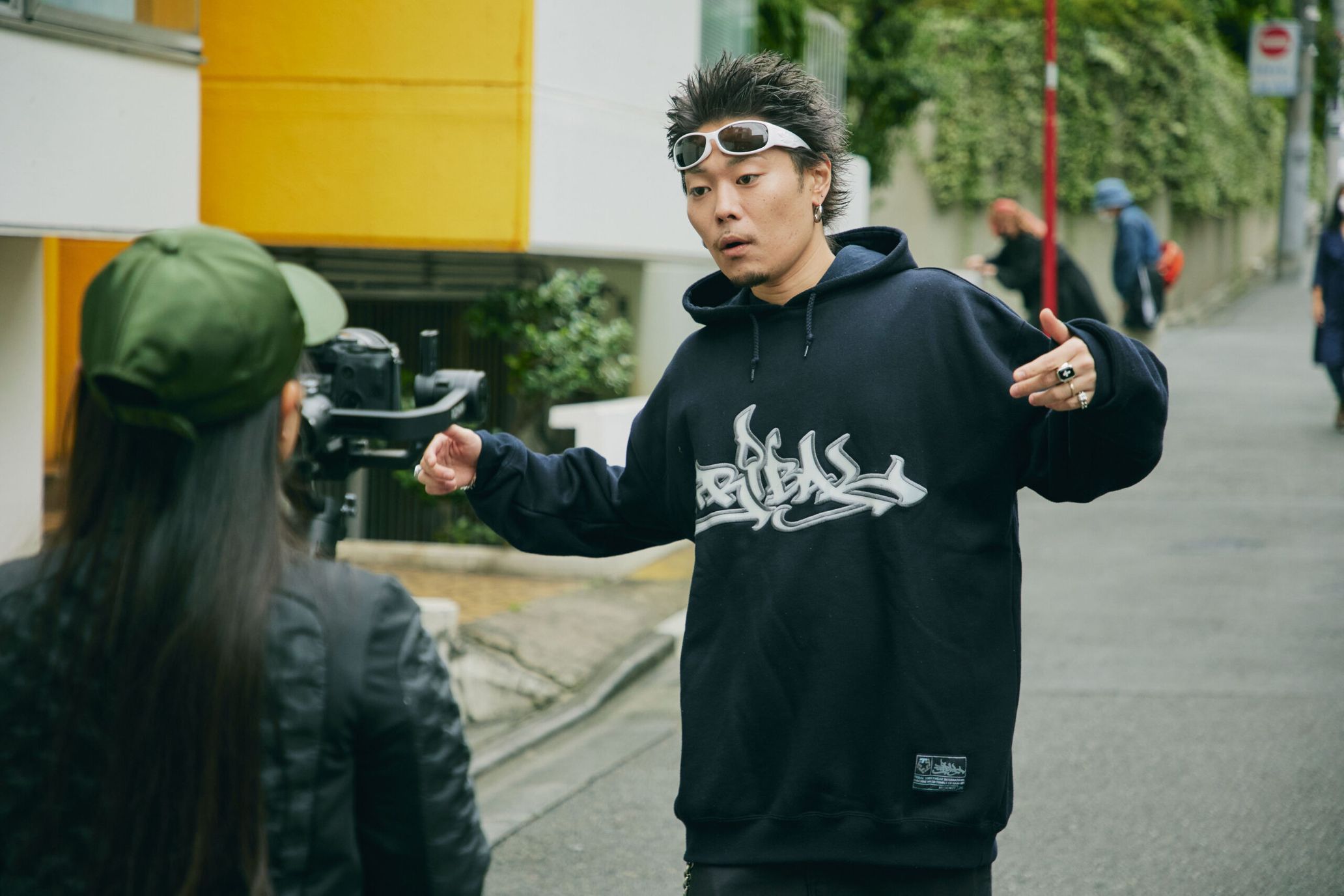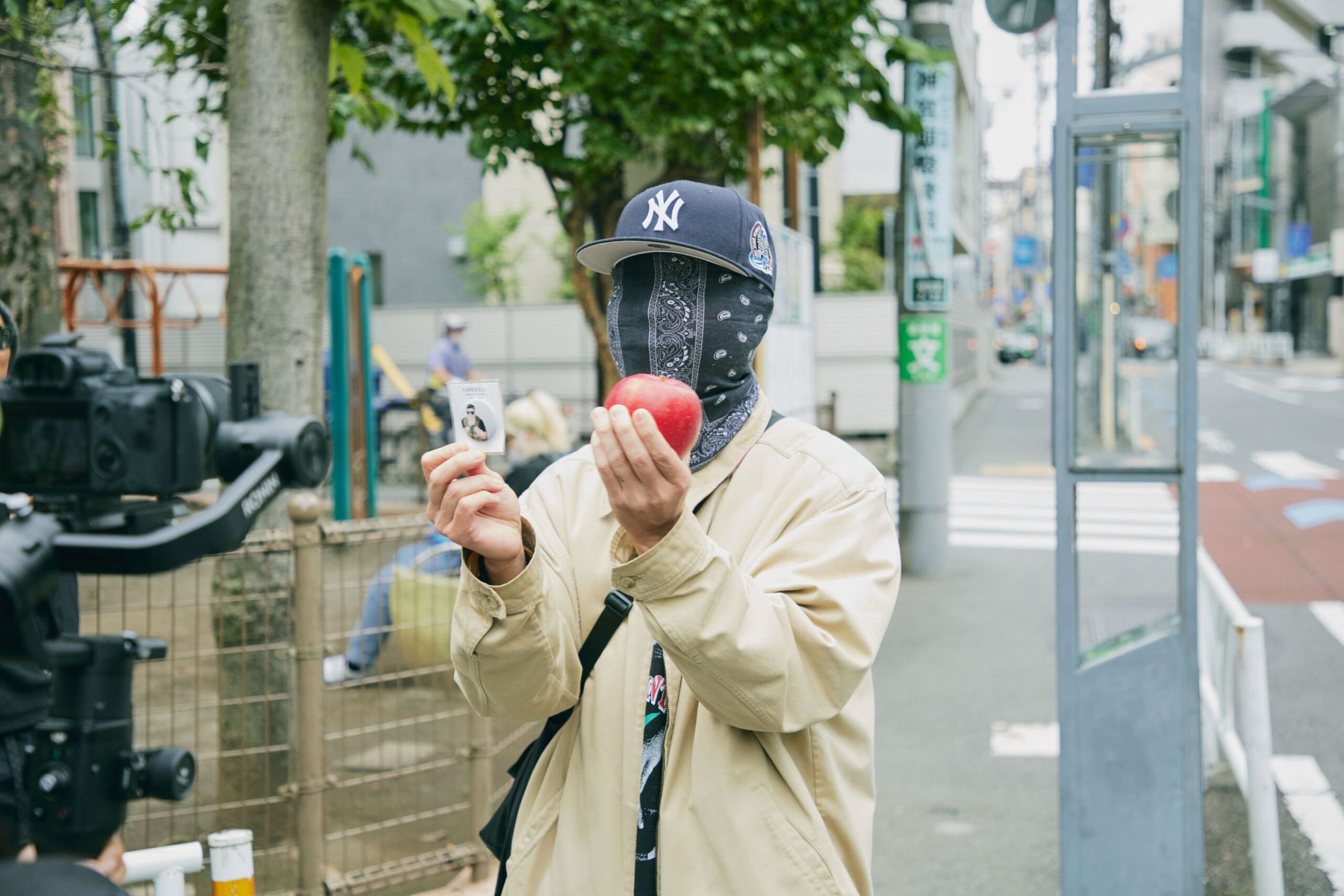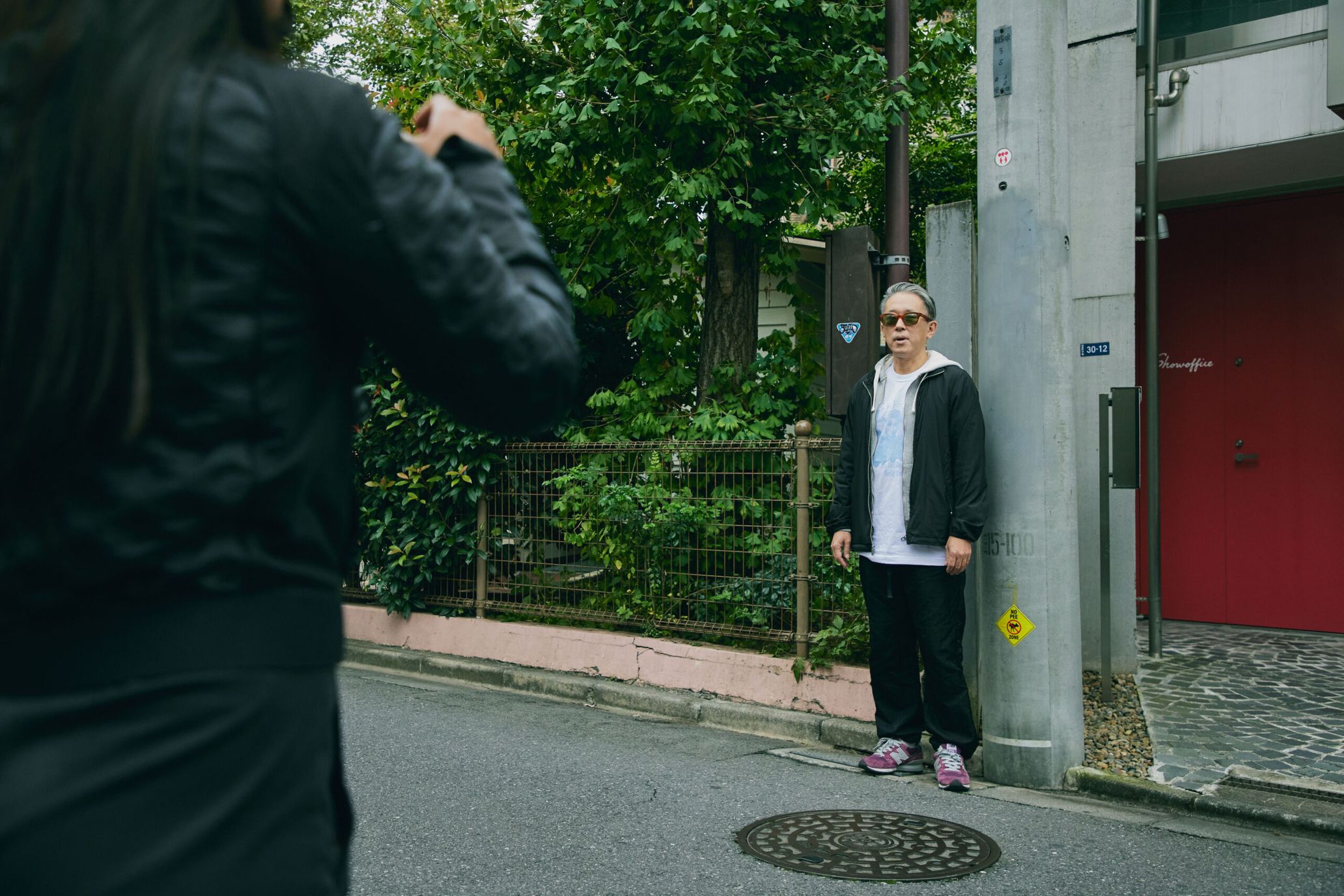Takeshi Osumi, also known as Big-O, was a rapper of Shakkazombie and a fashion designer who passed away in January 2021.
With Big-O’s former rap partner, Ignition Man, taking the lead, Shakkazombie dedicated a remixed and reimagined album last year titled BIG-O DA ULTIMATE. Ignition Man raps in Big-O’s solo song, “Sora Wo Torimodoshita Hi,” and also shot an accompanying music video.
Ignition Man mused on the world that Big-O created and dedicated lyrics for the rapper who’s now in the sky. We spoke to him about an amazing gathering of great friends who appear in the music video, tribute album, and anecdotes of the late rapper.
Shakkazombie – “Sora Wo Torimodoshita Hi (DJ Watarai Remix) Feat. Ignition Man, Jon-E”
The emotional impact Takeshi Osumi left on his friends
――How was it like watching the music video for “Sora Wo Torimodoshita Hi (DJ Watarai Remix) Feat. Ignition Man, Jon-E” now that it’s complete?
Ignition Man: Firstly, I want to say thank you to everyone. I’m so grateful people came together for this despite being busy.
――Many of Big-O’s friends star in the music video. They’re all from different genres and occupations. Did you have any criteria upon choosing the cast?
Ignition Man: Of course, I chose people close to Shakkazombie and Osumi (Big-O). They all had a deep relationship and connection with him. I wanted more people to be in the music video, but some people had left Tokyo, and I had no way of contacting others.
――You met some people for the first time in a long time thanks to the music video shoot, right?
Ignition Man: Yes, that applies to Buddha Brand and others. Those older guys are still full of life, so it was so much fun (laughs). I haven’t seen them since Kon-chan’s (Dev Large) memorial show. But I felt guilty they had to come all this way. Demi-san (Nipps) and Kuri-chan (CQ) told me they were glad to see me, so that made me happy, though. Also, it’s been a long time since the three members of Northern Bright got together. Yes, it was hard dealing with Osumi’s passing, but I was grateful to have this opportunity to see everyone again. Same with Namba-kun.
――Did you talk about your memories of Osumi-san with them, who you haven’t seen in a while?
Ignition Man: It was sad to see everyone under the given circumstances, but Osumi created this opportunity. Each of us has different emotions attached to him, and we all met him at separate points, so we talked about a lot of things. I heard some of the anecdotes for the first time. It’s been a while since I saw the members of Nitro (Nitro Microphone Underground), so I felt a bit nervous. But I started talking to them and realized nothing has changed.
――Why did you make a music video for “Sora Wo Torimodoshita Hi” out of all the songs from BIG-O DA ULTIMATE?
Ignition Man: Osumi loved that song, and a big reason is that it’s his solo song.
――In the music video, you can see Ebisu, where the office and store for the brand Osumi-san and you founded, Swagger, was located, and Udagawacho in Shibuya, where you used to hang out when you formed Shakkazombie. What does each of these places mean to you?
Ignition Man: The music video starts in the Reco-mura area in Udagawacho. It’s a special place to me. When we first founded Shakkazombie, Osumi and I didn’t have any money, and we would go to Cisco almost every day. It was an important place for our career as well. Also, there’s Still Diggin’, where Muro-kun would be a buyer back then, so that area is meaningful. I think everyone involved in hip hop at that time would know. Even though I sometimes go to Tokyu Hands, I don’t go any farther anymore. So, it’s been a long time. Also, Cisco shut down. There’s also a yakiniku restaurant nearby called Yuji, which I used to go to often. I went there for the first time in more than a decade after the music video shoot. Yuji-san was happy to see me for the first time in a long time, too. Of course, he was sad about Osumi, but I believe he brought us together again. I was also so touched I could shoot with the two guys from Buddha Brand in Udagawacho.
Also, Kounkaku in Ebisu. When Osumi and I started the brand Swagger, we used my house as an office, but later on, we decided to set up a proper office. There’s an apartment complex called Kounkaku, which housed the offices of well-known older designers for brands in Daikanyama. Toshimi-san (from Tokyo No.1 Soul Set) rented a room there, too. It was a place I admired. When Osumi and I were looking for a space, we told the real estate agent what sort of layout and the amount of rent we wanted. Then, Kounkaku came up by chance. We couldn’t help but rent it, so we signed the lease right away. I think we moved in on November 30th, 1999. It was our first office for Swagger, so I needed to include it in the music video. There’s also a scene where we’re walking around Ebisu. It’s a city that means a lot to Osumi and me.
Tokyo Tower also appears in the music video. Tokyo Tower is a symbol of Tokyo that Osumi loved. He wasn’t from Tokyo, but he was a “This is Tokyo” type of guy. I wanted to include Tokyo Tower, which represents the city. He collected a lot of Noppon, the merchandise of Tokyo Tower mascots (laughs).
Overall, the music video was shot in locations that meant a lot to Osumi and me.
“I don’t want to use the cliched word, unique, but Osumi was Osumi and no one else.”
――You re-recorded your lines for this tribute. Did you deliberately try to change anything from your old lines?
Ignition Man: When I listened to it myself, I felt like my style hasn’t changed, but perhaps I wrote lyrics and rapped in a more easy-to-understand way than before.
Also, “Sora Wo Torimodoshita Hi” was Osumi’s song, and it was interesting and nerve-wracking to be part of it. It was tough for Jon-E and me to trace Osumi’s lyrics and go into his world. I hadn’t seriously rapped in 19 years, but I wrote the lyrics well, and it felt refreshing. Instead of changing from my past self, I leaned in closer to my past self to convey the rap.
――You said that you rapped while putting yourself in Osumi’s world. What kind of rapper was he for you?
Ignition Man: I don’t want to say too much about my late rap partner (laughs). During our early days, he did some complex things, but he also rapped in a simple manner on many songs. Regarding his metaphors, the way he rapped on a beat, and his word choices and how they sounded, I don’t want to use the cliched word, unique, but Osumi was Osumi and no one else. I admire and envy people who have that kind of gift. My voice is normal (laughs), but maybe that’s why we worked well together.
Osumi and I are different because, on the surface, it seemed like his natural talent came through effortlessly, but in reality, he put a lot of thought and effort into his work. He once said in an interview that I was “a rapper-like rapper.” I’m straightforward about everything.
――From the outside, it seems like Osumi-san regarded you as unique too, which is why you were able to create Shakkazombie, a group that one couldn’t see anywhere else.
Ignition Man: I wonder. I hope that was the case (laughs).
――How would you describe Osumi-san as a designer?
Ignition Man: He was a beast. Before we had an office, we would always hang out in one of the meeting rooms at Avex, the former label for Shakkazombie. We’d spend all night there designing on paper. At first, we were just two people who liked clothes and would discuss and work on Swagger. But as the scope grew, it became clear that Osumi wanted to express himself differently, so I said, “Why don’t you try doing it on your own?” That turned into Phenomenon. I decided I wouldn’t be involved in his brand, as I said he should do it by himself.
Osumi switched his mindset between Phenomenon and Swagger and came up with totally different ideas. Eventually, more icons started wearing Phenomenon in the city. Osumi seemed to have an awakening. It was exciting to witness. While I tried to create from scratch, he took a long time to conceive an idea, and when he verbalized it, it was already completed. He didn’t show others that he put a lot of thought and effort behind the scenes. That was amazing.
Hip hop is becoming more accessible
――This tribute features many old and new artists from Japan, regardless of genre. Did you think of asking foreign artists to participate?
Ignition Man: Lupe (Fiasco) was very close to Osumi, and he has so much respect for him, so I wanted him to join from the start. Because of time constraints and other things, it’s finally been confirmed for us to release a song featuring Lupe remixed by Muro-kun.
――I see! This album also features younger rappers, such as Creative Drug Store, 5lack, and PUNPEE. Compared to the time Shakkazombie was active, hip hop today seems to have taken root and “gained citizenship” in Japan. What’re your thoughts on the current scene?
Ignition Man: Hip hop in Japan is so intriguing right now. Rather than it gaining citizenship, I think hip hop itself has changed. Trap music isn’t the same as what T.I. was doing. It’s become developed and more melodic, so it’s easier for people to listen to the music. If I were 20 today, I would be doing the same thing for sure. Some American rappers like Chance the Rapper approaches trap music slightly in a different way. It’s like hip hop done musically. Now, there are a lot of artists like that in Japan as well. We live in an era where it’s easier for people to listen to hip hop more comfortably. Back in my day, we tried to look intimidating (laughs). The scene was small back then, but you could say that hip hop itself has become more widespread. It’s not like every young person is chasing after New York.
――We live in a time where you can write songs with others without meeting them in person. When I look at this generation, I feel like artists are meeting in-person to create less and less, unlike Shakkazombie hanging out at Cisco.
Ignition Man: I’m not the type of person who gets too nostalgic about the good old days. If I had the knowledge and skills to make music from home, I’d do it in a heartbeat, but it takes a long time for people my age to learn new things (laughs). Kids today try things out right away, even if they don’t know what they’re doing, which is brilliant.
Of course, it was so fun to hang out with like-minded people at Udagawacho back then when not much information was available. But now, you can aim for the world from home, which is so special.
“[It] made me re-realize how Osumi was liked and loved by so many”
――How would you like the younger generation to listen to this tribute album, which was released during an era where hip hop has become widely accessible to different types of people? What kind of presence would you like it to have?
Ignition Man: I’d like to ask the listeners how it sounds. Maybe people think I’m doing something outdated (laughs). We, as Shakkazombie, happened to choose hip hop as a means of expression; the three of us liked other genres when we were making music, which is probably similar to how the younger generation approaches music today. While this album is a tribute, it’s also the culmination of exploring our old songs. It would make me pleased if people could see it as an album that uses the means of hip hop to get in touch with music.
I think it’s refreshing to hear a group that was active more than two decades ago making songs with a group that’s at the forefront today or even with old friends who’ve been around for a while. It’s the album I would like to listen to as a listener. I did what I wanted to do at that moment. I hope the younger listeners of today will wonder, “What kind of group is Shakkazombie, who’ve worked with Creative Drug Store, 5lack, and PUNPEE?” Hip hop evolves, as do the listeners.
――The younger generation of today doesn’t make a distinction between genres. A drummer in a rock band can be a hip hop DJ now. Back then, it was rare for a hip hop trio to play at live houses like Shakkazombie. You even shared the stage with hardcore bands and appeared at AIR JAM. That no-genre feeling is a connection you have with today’s generation.
Ignition Man: We thought of ourselves as just three guys who got their start in playing shows, but it seemed like the people around us saw us in the way you just described. Much like how kids today don’t have fun in just one genre, we enjoy seeing bands live. We also like to watch people playing hip hop in clubs. We would go to both places the same way.
――Osumi-san’s passing instigated this tribute. Tsutchie-san and you took the lead and remixed and reimagined Shakkazombie’s songs. How do you think Osumi-san thinks of BIG-O DA ULTIMATE?
Ignition Man: Yama-chan (Hirokazu Yamazaki of toe), who suggested the idea of creating this album, said, “Maybe he’s laughing!” But honestly, I’m just so nervous. I still don’t know how Osumi’s going to listen to the album or if he’s truly happy about it. What I can say is, although it was a rough time and I miss Osumi, I’m happy we could head in the same direction to create something together and manifest it.
The fact that so many people came to the music video shoot made me re-realize how Osumi was liked and loved by so many. I was so moved I teared up because I had a chance to get together with friends I used to hang out with around Udagawacho to make something. I was also glad to hear from the young artists that they respect Osumi so much. The one thing I can boast is, I made an album packed with feeling. I think Osumi is laughing and saying, “Why is Hide-Bowie doing this?” (laughs).
Ignition Man
Alongside Big-O and Tsutchie, Ignition Man formed Shakkazombie in 1993. With Big-O, he founded and operated the clothing brand Swagger. He’s currently working on his own brand Kakoi.
Instagram: @iggy1924
■Vinyl Record
SHAKKAZOMBIE BIG-O DA ULTIMATE(HIPHOP DNA / UNIVERSAL MUSIC)
A side
1. Sora Wo Torimodoshita Hi (DJ WATARAI REMIX) Feat. IGNITION MAN, JON-E
2. Tomoni Ikou CDS Version Pure 2021 Feat. VaVa, JUBEE, BIM, in-d
3. BIG BLUE (MURO’s KG Remix) Feat. IGNITION MAN, SUIKEN, MACKA-CHIN, DABO, GORE-TEX
B side
4. 5o tight So deeP – 5lack Feat. PUNPEE & SHAKKAZOMBIE
5. Niji (Chaki Zulu REMIX)
6. IT’S OKAY (THE GOODFELLAZ REMIX by TSUTCHIE) Feat. DABO, YAMAZAKI HIROKAZU (toe), TAKAYOSHI SHIRAKAWA (BACK DROP BOMB), TOSHI-LOW (BRAHMAN / OAU), HIROSHI BROWN (RUDE BONES)
Photography: Tetsuya Yamakawa
Text: PineBooks inc

